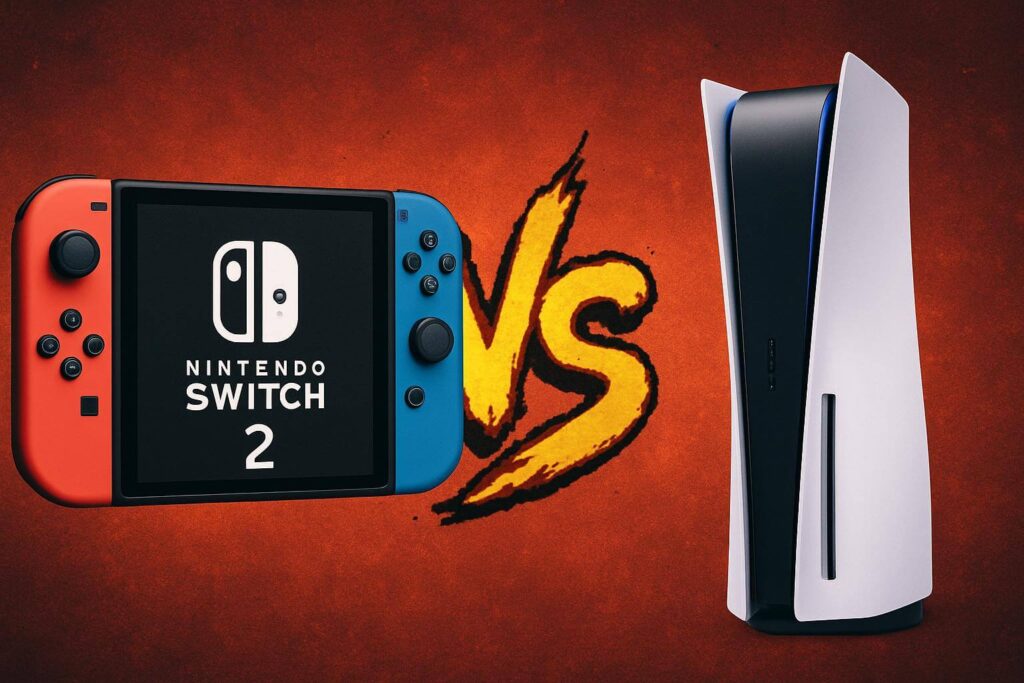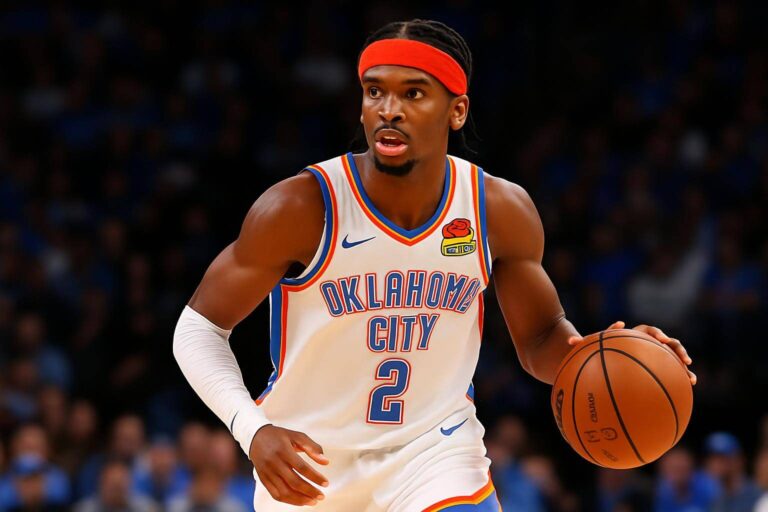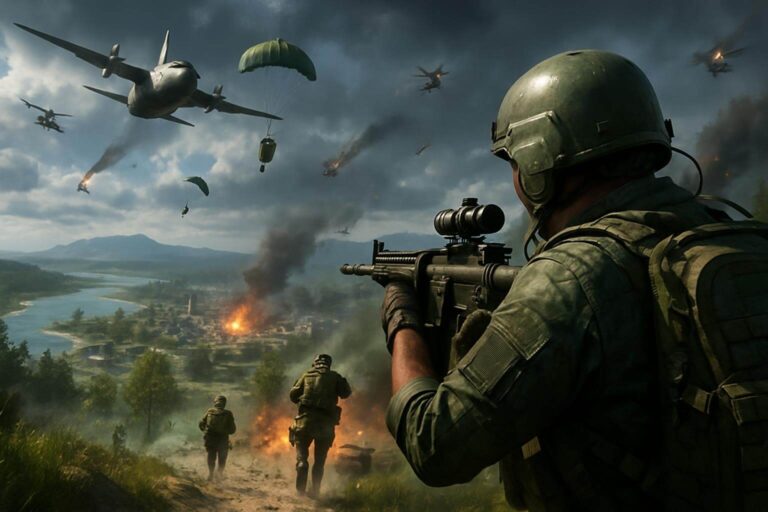
1. Design & Performance
Nintendo’s Switch 2 vs. PlayStation 5: The Switch 2 ships in a sleek hybrid form. It works handheld or docked. Switch 2 also features a 7.9‑inch 1080p LCD with HDR10 and 120 Hz VRR. It supports up to 4K/60 Hz on TV and runs on a custom NVIDIA Tegra T239 chip with DLSS and ray tracing. It has 12 GB RAM, 256 GB storage (expandable via microSD Express), Wi‑Fi 6, dual USB‑C, and a built‑in mic. The Joy‑Con 2 snap magnetically and include a “C” button for GameChat and mouse‑mode support. The whole unit weighs about 534 g with controllers attached.
The PS5 Slim and Pro are home‑only units. They use an AMD Zen 2 CPU and RDNA 2 (or RDNA 3 in Pro), with around 10 TFLOPS base GPU performance—up to +45 % in Pro. They offer 16 GB GDDR6, ultra-fast internal SSDs (1 TB–2 TB), HDMI 2.1, Wi‑Fi 6/7, and Bluetooth 5.1. The DualSense controller adds adaptive triggers, refined haptics, and a built‑in mic. The PS5 Pro delivers pixel‑perfect 4K and Fidelity/Performance modes on large VRR TVs.
Switch 2 wins on portability. It fits in a bag and lets you play anywhere. PS5 wins on raw power and high‑end visuals.
2. Game Experience & Library
Switch 2 leans heavily on Nintendo’s beloved franchises. It launches with titles like Mario Kart World, Breath of the Wild and Tears of the Kingdom (Switch 2 editions), plus bolstered ports of third‑party games at higher fidelity Its eShop now supports GameChat, GameShare, voice/video chat, and intuitive mouse mode for select games. Backward compatibility is complete, and original Switch games run at better framerates with HDR. Some early adopters note lack of deep new exclusives, and battery and storage limits have sparked mixed opinions.
PS5 delivers cinematic exclusives and third‑party heavyweights. Games like God of War Ragnarök, Spider‑Man 2, Horizon, and Call of Duty: Black Ops 6 shine with high framerates, HDR, and ray tracing. The DualSense enhances immersion, especially in high‑fidelity modes. PS5 supports nearly all PS4 games and offers Classics via subscription. Performance and visual quality remain top tier.
In handheld mode and on the go, Switch 2 excels. For living‑room immersion and cinematic thrills, PS5 leads.
3. Market Impact & Strategy
Switch 2 became Nintendo’s fastest‑selling console. It sold 3.5 million units in four days and surged stock performance. It continues to sell out frequently and aims for 15 million units in the first year. Analysts applaud its tech upgrades and hybrid charm, though they note the initial game lineup is modest.
Sony remains confident. They stress the PS5 family’s depth: immersive gameplay, controller innovation, strong library, and cross‑media expansion into film and TV. The hardware roadmap includes Slim and Pro iterations that further push fidelity with Fidelity/Performance modes and fast SSDs.
Nintendo focuses on portability, ease of use, and social gaming. Sony bets on immersion, high visuals, and narrative-driven experiences. Both serve different gaming styles — and both deliver winners.
Final Take
Switch 2 wins on flexibility, handheld play, and Nintendo charm. It packs great tech in a compact form. It makes gaming on the go fun and easy.
PS5 wins on high-end performance, cinematic graphics, VRR across large screens, and deeply immersive titles with innovative controller tech.
Choose Switch 2 if you want hybrid play, social features, and classic franchises anywhere. Go for PS5 if you crave top-fidelity visuals, deep narratives, and performance-rich home gaming.
Either way, both platforms promise strong futures. Gamers are the real winners.






